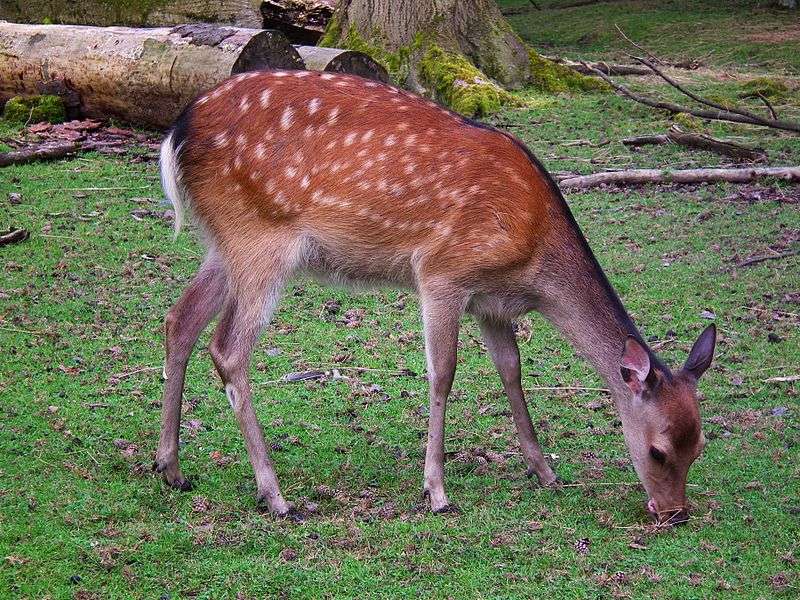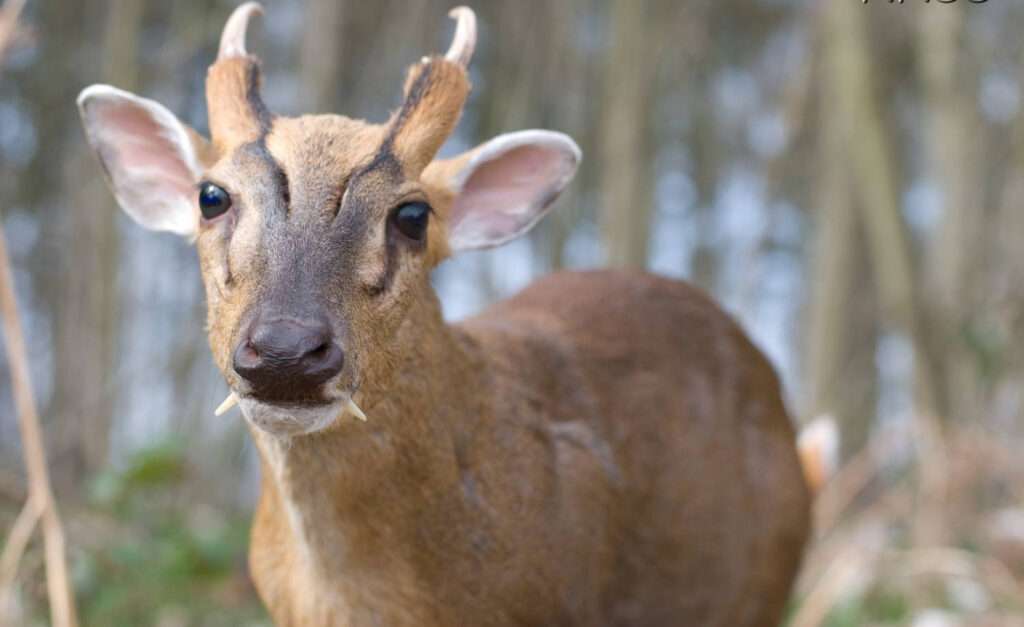
Description
Scientific Name: Cervus nippon
Lifespan: The longest lifespan ever recorded is 26 years, compared to 16 years in the wild.
Its name is derived from the Japanese word “deer” (shika). The species is referred to as nihonjika (Japan deer) in Japan and méihulù (‘plum blossom deer’) in China. One of the rare deer species that retains its markings as it ages is the Sika deer. The patterns of spots differ by region. Compared to the Taiwanese and Japanese subspecies, which have almost undetectable markings, the mainland subspecies has larger, more noticeable spots. Since they are largely from Japan, introduced populations also lack noticeable markings. The pelage can be mahogany, black, or white; white individuals are also documented.
In the winter, the coat gets shaggier and darker, the marks are less noticeable, and the males’ necks develop a mane. Male Sika stags have large, erect antlers with an additional buttress rising from the brow tine. An intermediate tine facing forward breaks the line leading to the top, which is frequently branched. Sika antlers can occasionally get some palmation, or flat spots. On their foreheads, females have a pair of recognizable black lumps. Stags’ unique manes are also visible during the rut (mating season). All Sika deer have short, trim, wedge-shaped heads, delicate legs, and a rambunctious demeanour. They frequently exhibit a unique flared rump when scared, similar to the American elk.

Habitat
Sika deer are indigenous to Japan and Eastern Asia, and they have been brought to Europe, North America, Australia, New Zealand, and the Philippines. They migrate to mountainous regions like Japan on a seasonal basis but prefer to reside in forests with a dense understory.
Behavior
Sika deer are primarily nocturnal hunters, though they will occasionally go out alone or in small groups during the day. While females with their fawns only form groups of two or three during the breeding season, adult males remain alone for the majority of the year, though they occasionally gather together. Using their forefeet and antlers, males dig holes to mark the boundaries of their territories. Males primarily utilize their hooves and antlers as weapons when they are fighting over territory. Because they can swim well, sika deer will readily enter the water to avoid predators or for other purposes. With over 10 distinct vocalizations, ranging from gentle whistles to thunderous yells, they are also extremely vocal animals.
Sika deer are primarily nocturnal hunters, though they will occasionally go out alone or in small groups during the day. While females with their fawns only form groups of two or three during the breeding season, adult males remain alone for the majority of the year, though they occasionally gather together. Using their forefeet and antlers, males dig holes to mark the boundaries of their territories. Males primarily utilize their hooves and antlers as weapons when they are fighting over territory. Because they can swim well, sika deer will readily enter the water to avoid predators or for other purposes. With over 10 distinct vocalizations, ranging from gentle whistles to thunderous yells, they are also extremely vocal animals.
Keeping as a Pet/In Captivity
Choose dense or wooded regions, and graze on neighbouring open spaces like farms or heath/moorland. Many people use peaceful places as “sanctuaries” where they can be unbothered.
Herbivores are sika deer. They consume bamboo, fallen leaves, grass, shrubs, fruit, herbs, fungus, and other plants. They even consume poison ivy. They rob grain and soybean farms in rural areas.
Table





